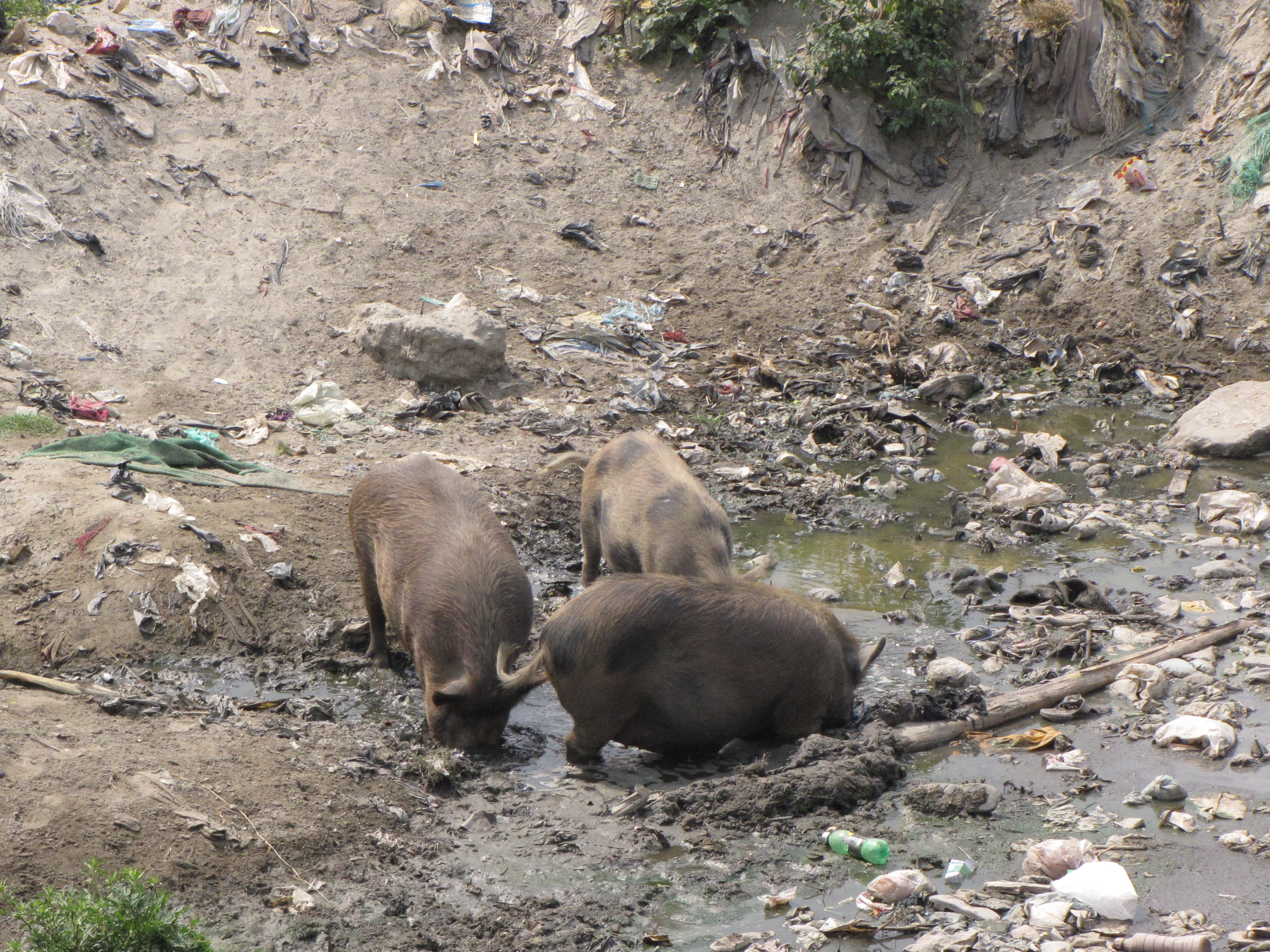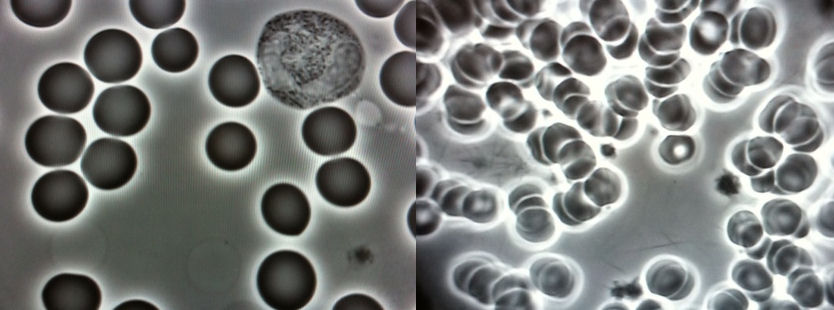You’ve spent quality time with the Stairmaster, hit the trail on weekends, and can hang out deep in Warrior Two all day. General fitness… check. There are just two more potential adversaries to consider that may interfere with an enjoyable ascent to base camp: altitude and germs.
Oxygen at base camp is around 50% that of sea level, meaning your heart, lungs and blood work twice as hard to get your body the oxygen it needs. General fitness preparation should take care of your heart and lungs. The preparation tips that follow relate to keeping the bloodstream healthy and vital.
On the trail, be sure to take the time to acclimatize so your body can add hemoglobin (protein in red blood cells that carries oxygen) and drink a ton of clean (i.e., filtered or treated) water to flush toxins out and keep things flowing. Note that you don’t want to drink so much water that you upset the natural balance of sodium to the point of hyponatremia, but this is pretty hard to do.
An excellent way to build up your blood before you lace up your boots is with chlorophyll. Ideally source it fresh from the plant, if that’s not practical you can also find it in concentrated supplement form. In the 40 days leading up to my flight, fresh green Juiceman juice (containing kale, wheat grass, parsley, cucumber, celery, spinach, cilantro, etc.) was part of my daily routine. I used a fantastic app called Lift to track the habit. I also supplemented ChlorOxygen
and adopted a mostly vegetarian diet. Meat in Nepal is sketchy at best, so you’ll want to go vegetarian while you’re ascending. You may as well get used to it beforehand. Extra chlorophyll combined with zinc has the added bonus of improving your smell when you sweat (allow about 2 weeks for this to take affect) which is helpful as you may go for days without a shower on the trail.
Hemetics (herbs and foods rich in iron and manganese) will help build up your blood too. Common examples are apples, blackberries, and raspberries. Interestingly enough, while on the trail to base camp, we shared apples slices almost every night for dessert. That apple a day may well have helped keep the doctor away on our trek.

Mmmm, bacon?
Another key to keeping the bloodstream happy is AVOID SUGAR! It causes stress on the body in so many ways, since our focus is on the blood I’m including this illustration rather than a lengthy sermon. You can see what sugar does to the blood on the right; when the cells are glued together like that they’ll have a hard time delivering oxygen won’t they? Challenge the myth that you need those empty calories to get up the hill. (All you’ll need is some “dal bhat power, 24 hour!”) If necessary, do a sugar detox before you leave. Read the labels of the foods you’ll be packing with you. Native Nepali cuisine tends to be healthy and delicious on its own, but be sure to pass on adding sugar to your tea or ketchup to your chips/fries.
Source: “Death by Sugar” on YouTube
This brings us to our second adversary; germs. Having a healthy bloodstream is half the battle. An alkaline diet rich in chlorophyll makes your bloodstream a germ-adverse environment to begin with. Avoiding sugar and alcohol, at least on the way up, will also deprive them of their favorite foods.
On the trail, filter or boil your water, or add purification tablets. Our group used Micropur, which is supposed to be the best if Amazon reviews are to be believed. To me it was like drinking heavily chlorinated pool water and was difficult to choke down even when masked with a flavor. I brought Potable Aqua
iodine tablets with the taste neutralizer which made the water much more palatable and used those most of the time. Ideally I would have used colloidal silver, but the potential headache of getting that much liquid past the TSA made me opt for the iodine. I brought a smaller amount of colloidal silver for treatment of actual infection. To make the water taste better and help with the altitude, I added a bit of ginger root tincture
and ginkgo tincture
whenever I refilled my trusty Klean Kanteen
. In the event I ran out of water and was dutifully waiting the 30 minutes on a tablet, I used my LifeStraw
.
Bring probiotics with you as a preventative measure (I like Garden of Life Primal Defense) to help your body replace any good bugs killed off by the purification tablets. In case of infection, bring colloidal silver
(make sure this is at least 500 ppm). Don’t wait for the nausea or Montezuma’s revenge, check your tongue (usually you’ll start to see or taste something growing in the back, for me it’s slightly metallic) and if you notice any signs, add the colloidal silver to your water. To combat viral, olive leaf extract is a favorite. I make a sort of tea out of both to make sure my body has whichever weapon it needs. In case of actual infection, I also brought Grapefruit Seed Extract
, Oregano Oil, and Asparagus Tea
.
In addition to the purely physical, there’s a mental game involved when the body starts to get stressed. I found a few meditative/affirmative/woo-woo techniques really helped on a few occasions. Learn and practice them beforehand. For altitude related stress involving difficulty breathing try one or a combination of these three techniques:
- Imagine your body is not limited to receiving air through the lungs. Picture every pore of your body opening up and directly allowing in the air it needs.
- Picture a stream of oxygen moving directly into your heart for distribution. There’s no shortage, only perfect abundance. In fact, it’s a fire-hose blast of oxygen, more than you can ever use. You can even point this at your friends as a sort of blessing to them.
- Imagine there’s a vortex of air above your head that sucks in any and all available oxygen molecules directly into your lungs. I added to this and pretended I had a Harry Potter-esque bubble around my body that stored all this extra oxygen so my whole body could breathe easy.
For any other sort of ailment, like headaches or sore muscles, this mindful breathing technique from Thich Nhat Hanh really helps:
In short, if you had a headache, you would put your awareness on your head, smile at it, and thank it for all the work it’s doing to help you reach your goal of EBC. E.F.T. or “tapping” was also helpful, as always.
All this was successfully field tested over three weeks in Nepal in which I made it to Everest Base Camp and Kala Patthar without any serious ailments. If I had it to do over, I would have brought extra chlorophyll and colloidal silver for my tour mates, gotten more sun beforehand, and checked the expiration date on my sunscreen (sunburn = epic FAIL).
To review, here’s a checklist of an amateur naturopath’s Himalaya trek first aid kit, and what each is for. You can repackage these into little 1-2 oz containers for the trail.
- ChlorOxygen
: Altitude.
- Ginger Root Tincture
: Altitude.
- Ginkgo Tincture
: Altitude.
- Primal Defense
: Preventative, bacterial infection.
- Colloidal Silver
: Bacterial infection. Can also be used to purify water.
- Olive Leaf Extract: Viral infection.
- Grapefruit Seed Extract
, : General infection.
- Oregano Oil: General infection.
- Asparagus Tea
: Flushes out the kidneys if needed.
- Organic Iodine: Antiseptic. May also sterilize water in a pinch. I even used a drop of it to kill off a nasal infection.
- Lavender Oil
: Sunburn relief, also doubles as deodorant.
- Tea Tree Oil
: Antiseptic.
- Castor Oil
: General purpose balm/salve. Will heal blemishes and take the itch out of bites.


Pingback: Preparation: Himalaya Trekking Gear | Enlighten Adventures
Pingback: May 6, 2013: Active Day 1, Kathmandu | Enlighten Adventures
Pingback: May 13, 2013: Active Day 8, Dingboche | Enlighten Adventures
Pingback: May 24, 2013: Active Day 19, Buddha’s Birthday | Enlighten Adventures